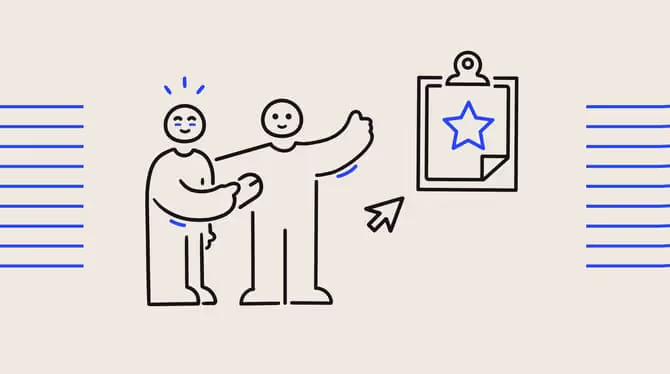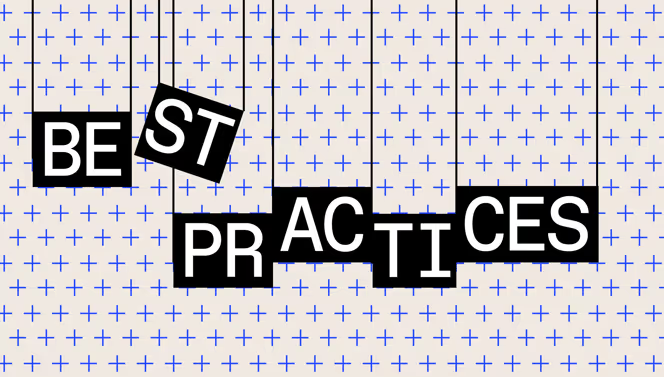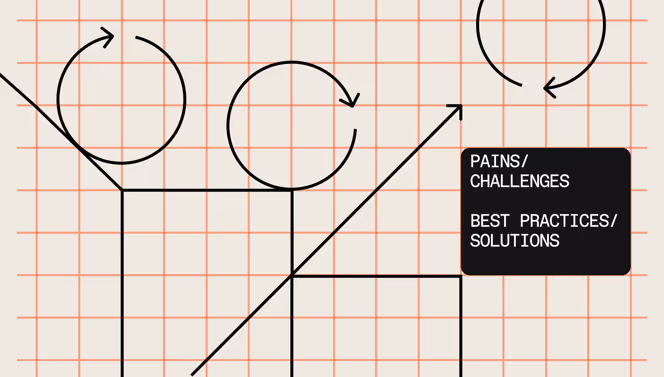Employee performance metrics: The savvy manager's ultimate power tool

Discover Workleap Officevibe's benchmark report on 12 key employee engagement metrics

Spider-Man has spidey senses, Professor X has telepathy, and great managers have… employee performance metrics. These little beauties, when used effectively, make for the perfect performance management power tool, capable of measuring how well someone is doing their job and how they can boost employee productivity — ultimately nudging both individuals and organizations closer to their goals.
But as with most things, striking a balance is the key to success. That’s why we’ve put together this guide to help you pick and implement a healthy mix of quantitative employee performance metrics and qualitative insights for a well-rounded rundown of your employees’ performance.
What are employee performance metrics?
Employee performance metrics are quantifiable measurements that give you an overview of a person’s productivity, effectiveness, and overall contribution to the organization. These can be anything from time management to collaboration skills to goal achievement.
Tallied up, these metrics serve as valuable indicators of individual performance. This is important information, as it can help pinpoint the strengths and weaknesses of a team member, allowing you to make informed decisions about when to intervene and what kinds of training programs and development strategies to apply.
But measuring employee performance as part of your performance management strategy isn’t just quantitative. Qualitative insights, such as individual career objectives, issues, and motivations, should also be gathered. This will give you a complete picture of what your employees need to succeed.
What’s more, when employees feel you’ve tailored their metrics to suit them, they’re more likely to feel empowered and motivated, leading to improved and sustained performance and better engagement and retention.
The benefits of tracking employee performance metrics
To maximize the benefits of having employee performance metrics in place, you’ll absolutely need to track them. That's because keeping up with how your team members are performing according to the employee metrics you’ve set will give you a good idea of where they’re winning and where they’re falling short — helping you decide how best to help them improve.
But aside from helping employees get better at their jobs, performance metrics have a number of added benefits, including:
- Enhanced performance: Employee performance metrics shine a spotlight on high-performing individuals. This not only inspires other employees to strive for excellence, but it can also help identify best practices to share across the organization.
- Crystal clear expectations: Employee performance metrics that provide specific, quantifiable objectives with time frames and quality standards (like setting monthly sales targets and customer satisfaction ratings for your sales team) let employees know exactly what to work towards.
- Better motivation and retention: Regularly measuring employee performance shows you’re committed to their growth and development. When employees see that their contributions are valued and meaningful, their satisfaction, engagement, and motivation improve, making them more likely to stay with the company.
- Fairer assessments: Performance metrics are typically based on quantifiable data and specific criteria, making them more objective than subjective evaluations of the past. This is important because having a set of standardized employee performance metrics that can be applied across the board removes the risk of bias and favoritism, helping foster a culture of healthy meritocracy.
- Data-driven decision-making: Employee performance metrics provide valuable data for performance reviews and decision-making processes. Whether it's resource allocation, promotions, or restructuring, quantifiable insights can help you make informed choices that benefit the entire organization.
9 Employee performance metrics to track
The metrics you choose to measure employee performance will most likely depend on your industry, the employee’s role, and organizational priorities. That said, there are a few universally applicable metrics that should be tracked to bring employee performance to the next level. These include:
1. Goal achievement rates
Measuring how effectively individual employees meet their goals and targets within given timeframes ensures that they stay aligned with set team and organizational objectives and timeframes. To do this, you can set concrete and achievable goals and track whether employees have reached them by monitoring objectives and key results (OKRs) or key performance indicators (KPIs) on a regular basis, like at the end of every quarter.
2. Quality of work
Evaluating the accuracy, thoroughness, quality, and consistency of an employee's work ensures they consistently deliver at a high caliber, which elevates and maintains an organization’s standards. Quality metrics can include things like error rates, quality audits, or peer feedback — which can be evaluated according to rating scales or checklists that measure accuracy, attention to detail, and adherence to company quality standards.
3. Attendance and punctuality
Consistent attendance and punctuality are indicators of dedication and professionalism. To track whether and when an individual has clocked in, consider introducing electronic swipe cards or biometric systems like fingerprint scanners. If a lot of work is done remotely, you could consider using timesheets, daily logs, or punch-in/out software.
4. Customer satisfaction
Happy customers are crucial to a business’s success. To gauge the ability of a team member to meet customer needs and deliver exceptional service, you can conduct customer surveys, introduce feedback forms, or encourage online reviews.
5. Team collaboration
Team players are a must in today's interconnected workplaces, so cooperation, active participation, and good communication are highly prized employee attributes. To assess an employee's ability to work effectively in teams, you could introduce peer evaluations or consider reaching out to colleagues, teammates, or other managers for 360-degree feedback.
6. Employee morale
According to research by Oxford University's Saïd Business School, employees with high morale saw a 13% increase in productivity. Happy employees are also more likely to stay with their organizations — in fact, they can actually be the best recruiters for new talent. To take the pulse of your employees’ satisfaction levels, you can conduct routine surveys, schedule regular one-on-one check-ins, conduct team discussions, and monitor turnover rates.
🤗 Looking to boost the mood in your office? Check out our easy-to-implement tips on how to up your team’s morale.
7. Time management
Around 31% of employees waste about 30 minutes a day. From social media and disorganization to unnecessary meetings and micromanagement, getting off track can be easy. Introducing time-tracking tools or software lets you see how your individual employees are allocating their time to tasks and projects, helping you identify potential bottlenecks, time-wasting activities, and opportunities for optimization.
8. Adaptability
Adaptable employees make for resilient, innovative organizations. You can evaluate a team member’s agility in adapting to new processes, technologies, or changing business needs by setting up regular one-on-ones with them or by gathering insights through anonymous feedback mechanisms. To do this, you can ask questions about an individual’s resilience, including adaptability, problem-solving skills, or the ability to remain cool and collected in sticky situations.
9. Learning and development progress
Lastly, tracking an employee's learning and development progress is essential for managers to ensure continuous growth, identify skill gaps, and assess the effectiveness of training initiatives. Learning Management Systems (LMS) can help track and document employees' participation in training programs, courses, and workshops. For a more personalized approach, individual development plans (IDPs) let you collaborate with employees to create personalized improvement strategies and skills assessments.
Practical tips for implementing performance metrics for your employees
Tracking employee performance metrics can trigger a host of benefits, including improving organizational and individual performance and fostering a culture of accountability, growth, and excellence. Of course, laying the groundwork for their successful implementation is key. It requires careful planning, clear communication, and consistent execution. Below are some tips to get you started:
Communicate the value of performance metrics
Some employees may mistake performance metrics as monitoring every little thing they do — making them feel self-conscious or micromanaged. Educating them on what exactly is being assessed and how it can benefit both them and the organization will ensure everyone is on board.
Set measurable employee performance goals
When setting goals, specific, measurable goals, and clear boundaries are essential for providing employees with a firm understanding of what’s expected of them, by when, the desired outcomes, and the criteria they’ll need for success. They also promote clarity and focus, making employees more productive overall.
🥅 Want to set some goals and boundaries but not sure where to start? Check out our curated list of employee performance goal examples.
Align metrics with organizational goals
Finding the right employee performance metrics to track is not an easy task — if they don’t align with your organization’s overall objectives, you might not get the most out of them. Start by clearly outlining your company’s goals and values and try to implement metrics that work to support them. This will foster a sense of purpose and alignment across the organization and will help drive individual and team performance.
Officevibe's goals and OKR feature lets you define and align individual, team, and organizational objectives.
Turn feedback into conversations
Regularly providing feedback to employees based on their performance metrics fosters a culture of continuous improvement and reinforces positive behaviors. At the same time, you can ask employees to give feedback on their own performance metrics and goals. This collaborative approach enhances engagement and accountability and encourages more open and honest conversations with your team.
Master your feedback skills with our guide for managers and teams on how to give honest and respectful feedback.
Offer support and resources
Sometimes employees are underperforming because they’re simply undertrained. As a manager, try to spot the gaps in your team’s knowledge and provide them with the tools, resources, and training they need to shine.
And we can help you do just that! Our learning management system provides an outstanding training experience and facilitates knowledge sharing throughout the organization.
Ensure fairness and avoid bias
Making sure that employees are evaluated against the same criteria (as long as it remains relevant to their roles) helps maintain a sense of fairness and promotes a positive work environment. To support this, and to avoid misunderstandings and misinterpretations, it's a good idea to clarify to managers and co-evaluators what the organization's employee performance metrics are and which evaluation standards and guidelines are consistently used.
To truly bias-proof your performance reviews, look into getting feedback from team members, colleagues, and other managers.
Evaluate the measurement process itself regularly
Biases, like weeds, can grow just about anywhere. And once they're there, they tend to take root and multiply. Regularly evaluating the performance measurement process to identify any biases or inconsistencies that may undermine fairness and accountability will help ensure you maintain fair, objective, and transparent metrics.
Monitoring and evaluating performance through ongoing conversations
While performance metrics provide valuable data, they should never replace ongoing conversations between managers and employees. Instead, aim to combine both quantitative metrics with qualitative insights through regular check-ins and performance discussions, which will help you gain a more holistic understanding of your employee's performance.
One-on-one conversations like these make for the perfect opportunity to give feedback, voice concerns, provide guidance, and recognize achievements — and they go a long way toward fostering a supportive, growth-oriented environment.
Not sure where you’ll find the time or energy to host frequent, constructive meetings? Officevibe's one-on-one meeting software lets you set and structure your meetings with ease, so you can easily monitor progress and pick up where you left off.
Below are a few tips to help amp up your communication game:
- Establish a culture of open communication: Open, honest, meaningful dialogue is most likely to happen when employees feel at ease. Foster a sense of trust by making yourself available to chat. Being approachable and remaining non-judgemental will help create a supportive atmosphere in which employees can feel safe to share their thoughts without fear of retribution.
- Schedule regular check-ins: Whether weekly, biweekly, or monthly, setting up frequent check-ins will ensure the ongoing monitoring of an employee's performance and provide an opportunity to address issues promptly.
- Use active listening: Active listening not only demonstrates respect, but it can also help you gather valuable insights into your employees’ performance. It involves closing your laptop, putting your phone away, and being present. Pay close attention to what your team members are saying, ask clarifying questions, and try to understand their perspective — even if it differs from your own.
- Provide constructive feedback: Feedback framed in a constructive way is specific, timely, and actionable, highlighting both strengths and areas for improvement. Such feedback focuses on development and growth rather than criticism and can end up boosting employees' confidence and inspiring them to aim higher.
🤓 Fun fact: Companies in which employees receive frequent feedback and constant communications with their managers have 14.9% lower turnover rates.
Measure employee performance to bring your organization to new heights
Clearly, employee performance metrics aren’t just benchmarks for performance reviews and promotion considerations. They’re a powerful performance management tool and the key to driving business alignment, growth, and success.
That’s because, by tracking and analyzing some key indicators, managers can gain insight into employee contributions, identify areas for improvement, and make data-driven decisions — all of which work to reduce bias, enhance performance, empower employees, and ensure goal alignment.
Yet, while metrics are essential, they should always be balanced with ongoing conversations that enable a deeper understanding of individual performance. That's because it’s only through leveraging employee performance metrics and fostering a culture of communication, support, and continuous improvement that organizations can unlock the full potential of their workforce.
After all, successful employees are what make successful companies.
Give HR and managers the clarity, confidence, and connection to lead better every day.


%20(1).png)


.png)
.png)







